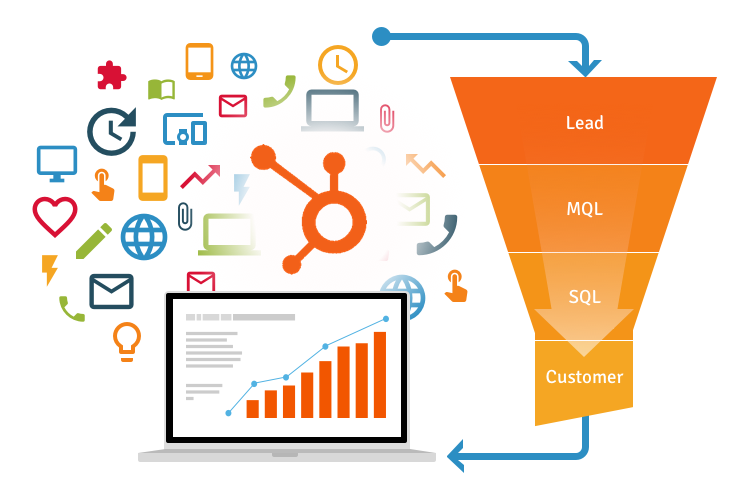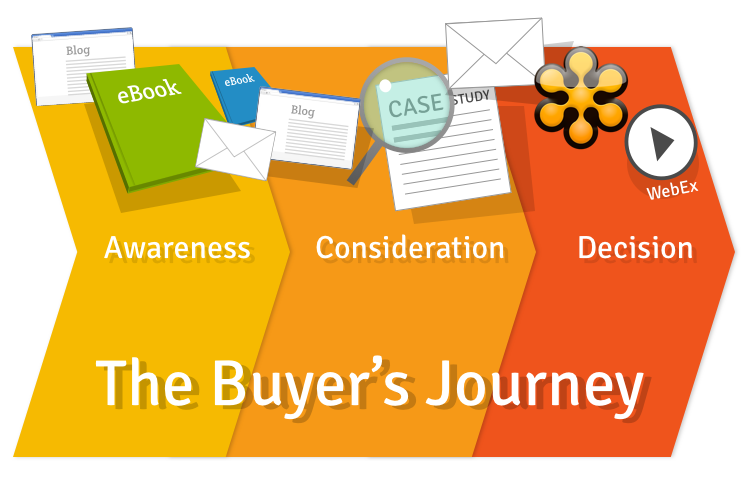So you’ve launched an inbound campaign and started to attract good leads. That’s great, but it’s just the start. Now you have to keep those leads happy, while gently leading them through the buyer’s journey to sales-ready qualification. If your sales cycle is a long one that’s not always easy.
Sending leads inappropriate content and interrupting them with unsolicited sales calls is increasingly ineffective. Instead, to increase close rates, avoid wasted sales time and reduce the sales cycle, leads should be nurtured with appropriate content to ensure they understand the value of your solution before sales teams contact them.
Many marketers may think they already run effective lead nurture campaigns. But using automated lead nurture as part of an inbound campaign ensures all leads get quick responses and are automatically sent the right content for them. No lead is forgotten and no content wasted.
Challenges of Long Sales Cycles
According to Gleanster Research, 50% of qualified leads aren’t ready to buy. They might be open to education, and delighted that you can identify their pain points. But actually signing up for your solution? They’re not there yet, and may not be for a while, depending on the length of your sales cycle.
That means sectors with long sales cycles, such as the SaaS and software industries, which have an average cycle of 3-18 months (and there’s some suggestion that B2B sales cycles are getting longer across the board), face huge challenges in keeping leads interested and moving them smoothly through the sales funnel.

They might lack appropriate content to last the length of the sales cycle, or simply fail to notice leads wandering off the path. Equally, they might bore leads with repeat content, or lose them in bottlenecks.
The upshot can be lost leads and a lot of wasted effort by both marketers and sales teams. The wrong content discourages leads from moving along the sales path. Sales teams engage with leads at inopportune moments, wasting everybody’s time.
Automated lead nurturing tackles these challenges.
What is Automated Lead Nurturing?
We know that lead nurturing works. A DemandGen report finds that nurtured leads produce, on average, a 20% increase in sales opportunities versus non-nurtured leads.
But traditionally, nurture is labor intensive. The average buyer’s journey is complex, and the content that helps move them through the sales funnel from awareness (of a problem), to consideration (of solutions), to decision (of what solution to buy) needs to be expertly honed and perfectly timed.
Random one-off emails to your database won’t cut it in a competitive world, especially during a long sales cycle. Talking up the detailed benefits of your solution to someone who is only vaguely aware of a problem is pointless at best. By the same token, emailing simplified educational material to a highly educated lead desperately seeking a solution is potentially counterproductive.
Automating lead nurturing, on the other hand, allows for the systematic tracking of lead engagements with your content and site, and accurate pinpointing of that lead’s stage in the sales cycle. That means you can drip feed appropriate content at the right time – leads are never forgotten and opportunities never missed.

Forrester Research finds that companies who excel at lead nurturing generate 50% more sales ready leads at 33% lower cost. Automated lead nurturing, done properly, is the gold standard in its field.
The 3 Pillars of Automated Lead Nurturing
Many marketers already automate some of the nurturing process, but it is the combination of three key points that make automated lead nurturing especially powerful.
- Nurturing. You likely do this already and send your leads content, from blog posts to infographics to case studies. But according to Pardot’s State of Demand Generation study, 77% of buyers want different content at each stage of their research. Targeting your content formats and focusing on the lead’s buyer’s journey stage is vital, and creating automated email workflows makes the process easier.
- Segmentation. When leads interact with your content, tracking their responses in detail allows for segmentation. Leads are divided into appropriate contact lists, likely by niche or pain point. Without an automated workflow, the next round of emails would be adjusted manually. But with an automated process, emails can be drip-fed to designated contact lists, delivering relevant information at the right time.
- Grading. Marketing automation lets you pinpoint exactly where a lead is in the sales cycle, so your contact lists – and the content sent to them – is constantly refined and updated. Contact lists can be divided and subdivided again, targeting content with pinpoint accuracy. Grading leads based on their interactions with all marketing efforts allows you to move them smoothly through the sales funnel. When they reach a designated threshold (based on a points total) suggesting sales-ready status then – and only then – are they passed to sales.
3 Ways Automated Lead Nurturing Supercharges Your Sales Cycle
At its simplest, automating the sales process means being able to track and use a lot more data than would otherwise be possible and use that information to more accurately segment and target leads, speeding their path through the sales funnel.
More specifically:
- Your sales team doesn’t waste time educating leads about your product and service. A fine-tuned nurturing machine means leads are informed already, and won’t have been passed to sales if they haven’t been nurtured through to the decision stage.
- At the outset, automated lead nurturing takes time to set up. You need to create relevant content to support your segmented workflows, set contact frequencies and make sure you have a lead grading system to move leads from one stage in the process to another. But once your campaign is established, it will continue to work for you, and give your marketing and sales teams time for other tasks.
- Automation means bottlenecks are quickly identified and easily rectified. Automatic reporting can show where in the funnel leads are getting stuck, and it allows you to develop your content accordingly. In a nutshell, content is continually honed to address sales barriers and smooth the path to purchase.
If you haven’t automated your lead nurturing process there’s every chance your sales team is wasting time on leads that aren’t sales ready, while irritating potential customers with mistimed and irrelevant contact.
Automated nurturing gently leads your targets through the sales funnel, breaking down barriers to sales with timely, appropriate content. The result? Your sales team spends far more time on sales-ready leads, supercharging your sales cycle.
About the Author: Alex is Director of Strategic Internet Consulting, a London-based inbound marketing agency with a raft of major public and private sector clients. Alex helps businesses large and small generate qualified leads via inbound marketing and sales, social media and open source web development. He tweets at @StrategicIntC.